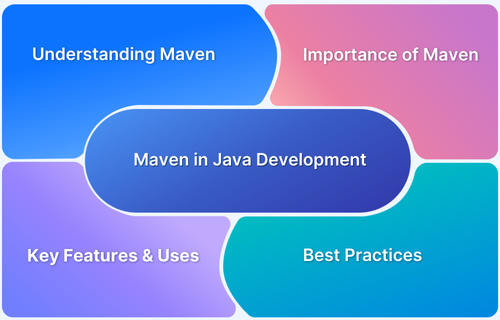What is a Build Tool? (with Top 5 Build Tools)
By Somosree Roy, Community Contributor - July 27, 2023
Build tools are the backbone of modern software development, automating the process of turning raw source code into deployable applications. Instead of relying on repetitive manual steps, build tools handle compilation, testing, dependency management, and packaging—making the development lifecycle faster, more consistent, and less error-prone. In this guide, we’ll explain what build tools are, why they matter, and compare the top options used by developers today.
Overview
What Are Build Tools in Software Development?
- Software utilities that automate compilation, testing, dependency management, and packaging.
- Eliminate human error, ensure consistency across environments, and streamline CI/CD pipelines.
Key Advantages of Using Build Tools for QA and DevOps
- Removes repetitive manual tasks.
- Produces reproducible builds across teams and systems.
- Simplifies handling third-party libraries.
- Faster build times and efficiency.
- Seamlessly fits into modern DevOps workflows.
- Run automated tests as part of the build.
- Creates ready-to-ship artifacts.
Top 5 Build Tools and Their Core Use Cases
- Jenkins: Open-source CI/CD automation server with 1,800+ plugins for high customization.
- Gradle: Fast, flexible tool with incremental builds; popular for Java and Android projects.
- Maven: Convention-over-configuration approach; excels at managing Java dependencies.
- Travis CI: Cloud-first, GitHub-friendly build tool ideal for open-source projects.
- CircleCI: Docker-native CI/CD tool supporting caching, parallel builds, and scalable pipelines.
This article explains what build tools are, their key benefits, top five tools, and how to choose the right one for your project.
Importance of Build Tools
Testing and software development survive in tandem. It’s only a flawless and highly functional testing mechanism and detecting bugs, which can pave the way for impeccable software release. Modern software development relies heavily on build tools that facilitate the transformation of source code into deployed software.
- Their worth resides in their ability to improve productivity, mechanize mundane processes, and guarantee uniformity between different projects & settings for coding.
- Build tools improve developer cooperation by automating previously laborious operations like compilation, testing, packaging, & deployment.
- In addition, they facilitate the incorporation of other libraries, take care of dependency management, and improve both the speed & the compactness of the final product.
What are Build tools?
Software utilities known as “build tools” streamline the transformation of source code into deployable forms like executables and libraries. By improving and streamlining several SDLC phases, they are an integral part of the development process.
Challenges in Manual Processes
Not employing automated construction tools but relying on human labor might cause some problems.
- Human errors: Misconfigurations, overlooked stages, and the omission of crucial files are just some of how manual processes can go wrong.
- Inefficiency: Doing the same things repeatedly by hand is very expensive on time and energy, which in turn slows down development & causes irritation.
- Inconsistency: Inconsistency arises when different developers use their individual manual techniques to complete a build, making it difficult to work together and keep up with the project.
- Scalability Challenges: Manual process management becomes more time-consuming & error-prone as the scope of the project expands.
Why use Build Tools? (Top 10 Benefits)
Build tools are an integral part of the software development process by providing a wide range of vital characteristics and features that speed and improve the building & deployment of software applications. Let’s look at their top 10 benefits:
- Automation: Build Tools eliminate the requirement for manual involvement & errors by automating routine activities. This is helpful while working on complicated projects or frequently modifying the code.
- Consistent: Build tools guarantee reproducible outcomes across a wide range of development settings & platforms by strictly adhering to prescribed build processes. As a result, fewer problems with software deployment due to improper configuration will occur.
- Dependency Management: It makes it simpler to include third-party code in the project by handling requirements on external libraries & frameworks. They can streamline the development process by automatically downloading, managing, and changing dependencies.
- Task Parallelism: Many build programs can run multiple tasks simultaneously, reducing build times and boosting productivity. It is beneficial for large projects with many moving parts.
- Incremental Builds: Tools for construction allow for progressive construction, which saves time and materials. Instead of recompiling the entire application, they detect changes in the source code and merely recompile the affected sections.
- CI/CD Integration: Build tools that integrate with CI/CD pipelines transparently to developers. This helps to automate the build & deployment procedures fully. This synchronization allows for dependable software delivery in a short amount of time by continuously integrating and deploying updates to production settings.
- Code compilation: is the process by which build tools transform source code into binary executables or intermediary representations. This process aids in detecting syntax faults and other problems during the development phase.
- Testing and Quality Assurance: Automated tests may be run as part of the build process to make sure that new features and fixes to the code don’t break anything & that the code is up to the quality standards that have been established.
- Compatible and expandable: These resources are compatible with numerous languages, frameworks, and operating systems. You can modify them to meet the requirements of your project by adding new features, such as plugins or scripts written by hand.
- Deployment and Packaging: They simplify transferring software to end-users or different groups by helping package it into deployable formats.
Build tools are crucial to the state of the art in software development. They eliminate the need for human labor and its accompanying inconsistencies and inefficiencies. Adopting build tools allows teams to deliver high-quality software more efficiently, enhancing the whole development process.
Top 5 Build Tools (with Features, Advantages/Limitations)
1. Jenkins
Jenkins is a widely used open-source automation server that makes CI/CD procedures easier. It allows programmers to rapidly and reliably create, test, & release software. It works with multiple programming languages and can run on various platforms (Windows, Linux, and macOS).
Features
- A simple setup process across several environments.
- Allows for flexible plugin-based integration with various third-party tools and technologies.
- Scaling up to more computers is now possible with distributed builds.
- Features native VCS integration (Git, Subversion, etc.).
- Allows for in-depth tracking and reports.
Advantages
- Extensive plugin ecosystem allows for great personalization and adaptability.
- Lots of people who care about it and lots of information about it.
- It has an intuitive design that makes it simple for everyone, not just programmers.
- Allows easier deployment in cloud settings by supporting integration with cloud services.
- Ideal for tasks of any scale and scope.
Limitations
- Requires a lot of resources, especially for large-scale implementations.
- Additional settings and programming may be necessary for managing complex pipelines.
- Inadequate configuration and maintenance could introduce security risks.
Perform reliable automated testing for your Jenkins pipeline on BrowserStack. Automatically determine if a build is ready for the next step. Each new code commit to the repository triggers Selenium tests on BrowserStack. These tests run in clean, isolated test environments
2. Gradle
The open-source build automation tool Gradle places a premium on adaptability and speed. It defines build scripts with a Groovy-based DSL (Domain-Specific Language).
Features:
- Encourage readability and maintainability, such as declarative & brief build scripts.
- Management of dependencies that makes use of intensive caching & parallel resolution.
- Allows for the construction of multiple projects dependent on one another.
- Gradle Wrapper enables reproducible builds in several IDEs.
- Easily expandable through plugins; works with various other programs and hardware.
Advantages:
- Incremental construction capabilities provide for quick and efficient build times.
- Exceptionally adaptable, letting you make changes for each project.
- It’s flexible because it works with Java and other languages too.
- Dedicated help for creating Android apps.
- Constant development and a lively user base.
Limitations:
- More difficult to pick up if you’re unfamiliar with Groovy or DSLs.
- There isn’t much help for aging software or Java versions.
3. Maven
Apache Maven is a popular build automation tool that has found its niche in Java development. It controls construction via XML-based Project Object Model (POM) files.
Maven already holds a gigantic community of users helping to report bugs, following up on use cases, facilitating improvements and advancements, and supporting customer assistance.
Features:
- This method prioritizes convention over configuration, which streamlines project setup & cuts down on configuration time and hassle.
- Full control of dependencies through a centralized location (Maven Central).
- Assists in various project phases (clean, compile, test, package, install, etc.).
- Supports the use of common frameworks and methods throughout a project.
- Compatibility with major revision management tools such as Git, Subversion, etc.
Advantages:
- It’s simple to begin going, especially for Java-based initiatives.
- Robust help keep track of direct and indirect links between projects.
- Support for a large variety of plugins and integration with other systems.
- Widely used and supported by the Java community, therefore, there is a wealth of materials and information available.
- Well suited for enterprise-scale initiatives with intricate dependency graphs.
Also Read: What is Maven in Java? (Framework and Uses)
Limitations:
- Less adaptability than Gradle due to a more dogmatic approach.
- Projects with many dependencies take more time to construct.
- Some programmers may find the XML-based configuration method to be too onerous.
4. TravisCl
Travis CI is the cloud solution to use when it comes to automating the build & testing of GitHub repositories. Since Travis is cloud-based, it is easy to use with a user-friendly GUI.
Must-Read: Jenkins vs Travis: The War of CI Tools
Features:
- Setup is quick and painless, especially for GitHub initiatives.
- It’s compatible with a wide variety of languages & frameworks.
- Delivers parallel builds for accelerated testing and shorter build times.
- A ‘.travis.yml’ file allows for individualized build settings.
- All pull requests and pushes to GitHub will automatically start a build.
Advantages:
- GitHub’s free plans for public repositories make it a great choice for hosting open-source projects.
- Quick and trustworthy build & testing automation.
- Reduces developer work with hands-off setup & configuration.
- Allows for deployment to several environments, including the cloud.
Limitations:
- Lower degree of adaptability than self-hosted alternatives.
- Limitation to GitHub-only repositories.
Note: Travis CI integrates with BrowserStack and can be used for interactive and automated testing through frameworks like Selenium, Karma, etc.
Use BrowserStack with Travis CI
5. CircleCI
CircleCI is a continuous integration and continuous delivery platform hosted in the cloud. It focuses on testing all submitted code changes using unit tests, integration tests, and functional tests. It is a pretty reliable tool if you are just getting started with CI, especially for projects using containerization (Docker).

- Compatibility with a wide range of languages & frameworks for developers.
- Environment that uses Docker containers to ensure reproducible builds & dependencies.
- Includes caching for faster builds in the future.
- Parallel testing for quicker iteration and feedback.
- Supports a wide variety of source control and cloud services.
Advantages
- Quickly and easily set up and configured.
- Ability to scale to any size project.
- Easy deployment thanks to tight connection with cloud services.
- Detailed instructions and helpful customer service.
- Offers both cloud-based and on-premises deployments.
Limitations:
- High-priced builds that require a large team or a lot of resources.
- Restricted to the degree that adequate cloud-based resources are at hand.
- The steep learning curve associated with multi-container projects.
Follow-Up Read: CircleCI vs Travis CI: Core Differences
Comparison of Build Tools
| Build Tool | Features/Capabilities | Language / Platform support | Community and ecosystem |
|---|---|---|---|
| Jenkins | Extensive plugin ecosystem | Platform-independent (Java-based) | Huge number of plugins & integrations |
| Integration with several version control systems | Web-based interface for easy management | Rich set of documentation and resources | |
| Automation of CI/CD processes | Supports multiple programming languages | Large & active community | |
| Gradle | Dependency management with powerful caching | Android application development support | Extensive plugin ecosystem |
| Incremental builds for improved efficiency | Mainly Java, yet supports other languages too | Growing & active community | |
| Multi-project build support | Various IDE integrations (Android Studio, Eclipse) | Regular releases & updates | |
| Maven | Centralized dependency management | Supports other programming languages via plugins | Apache Software Foundation’s backing |
| Convention over configuration approach | Primarily Java projects | Large & mature community | |
| Integration with version control systems | IDE integration (Eclipse, IntelliJ, NetBeans) | Regular updates & maintenance | |
| Travis CI | Easy setup & configuration | Supports several programming languages | Active & supportive community |
| Customizable build configurations | Popular version control system integration (Git) | Well-integrated with GitHub’s ecosystem | |
| CircleCI | Integration with popular version control systems | Continuous Deployment to various platforms | Regular updates & improvements |
| Parallel testing for faster build times | Android app development support | Extensive documentation & guides | |
| Docker-based environment for consistent builds | Multiple programming languages and platforms | Growing & supportive community |
Choosing the Correct Build Tool
There are three crucial factors to consider while picking a construction tool:
1. Project requirements and complexity
Which build tool is best depends heavily on the nature and scale of the project.
- Lightweight build technologies like Maven may be suitable for simple and compact projects. Maven’s focus on convention over configuration shortens learning curves and reduces the time spent tailoring build scripts.
- However, Gradle may be a better option for more complex applications with varying requirements. Gradle’s robust capabilities, like incremental builds while helping for many projects, make it a great choice for managing complex or expansive endeavors.
2. Language and platform compatibility
Think about the many platforms and languages involved in your project.
- Maven & Gradle are two popular options if your project will mostly require Java development because they both have robust plugin ecosystems & great Java support.
- However, Gradle is a good choice if you use multiple languages or need Android app development that integrates well.
Make sure the chosen build tool may smoothly integrate with the cloud platforms and virtualization technologies needed for your project.
3. Integration with CI/CD Pipelines
Making sure your selected build tool works properly with your preferred continuous integration & continuous deployment (CI/CD) platform is crucial for creating efficient CI/CD pipelines.
Jenkins & Travis CI are two popular CI/CD automation tools with a solid track record.
- With their ability to easily interact with GitHub repositories & offer uncomplicated setup, cloud-based solutions like Travis CI and CircleCI may appeal to those who use GitHub as their version control system.
- Jenkins could be a good option if you’re looking for a CI/CD platform that gives you a lot of leeway in setting up your infrastructure and can scale with distributed builds.
- Travis CI and CircleCI are often compared regarding configuration, integrations, analytics, parallelism, cloud integrations, and more.
- If you are searching for a friendly tool, CircleCI is worth it. However, if your need is an open-source tool to streamline the build process, Travis CI is the answer.
Conclusion
A build tool is a crucial piece of software that simplifies and automates the transformation of software source code into a deployable, executable form. It is essential in today’s software development since it improves productivity, reduces mistakes, and guarantees uniformity between different projects and environments.







